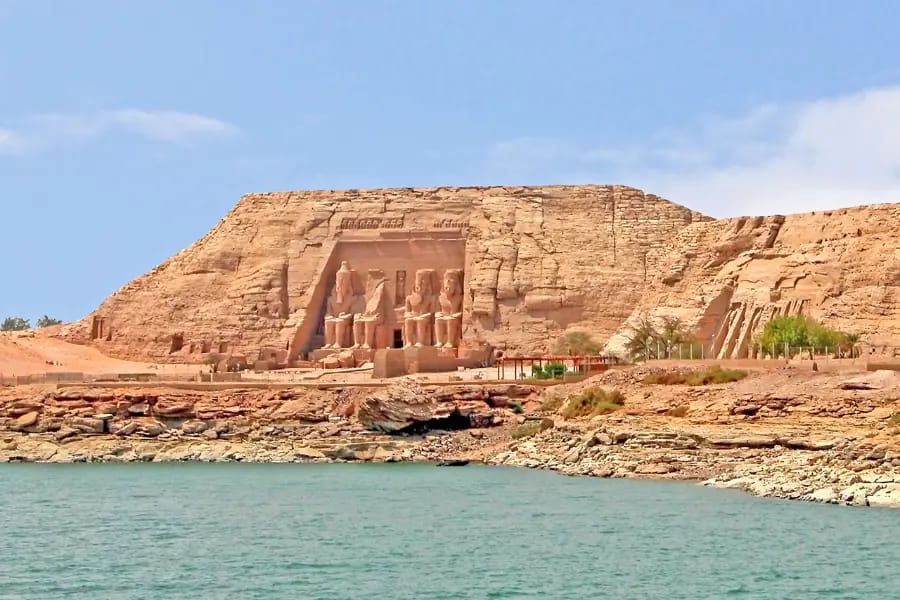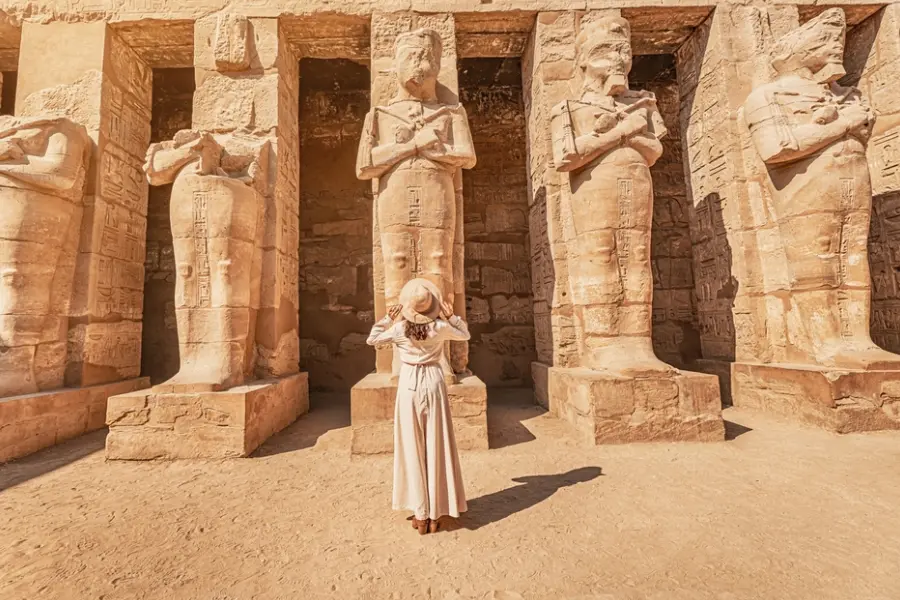Ancient Egyptian Culture: Art, Language & Daily Life
From pharaohs and temples to law, language, and everyday traditions, Ancient Egyptian Culture shaped human history with a unique blend of religion, governance, art, and storytelling. Along the Nile, faith and bureaucracy were inseparable: the pharaoh ruled as both head of state and divine guardian, while scribes and priests safeguarded the order of ma’at.
Step into this world and you’ll discover not only monuments but also the rhythm of daily life—food, festivals, fashion, family—captured in papyri, murals, and artifacts. What survives is more than ruins; it’s a living legacy that still fascinates and inspires.
Ancient Egyptian Culture – Overview
Pharaonic Egypt thrived on an intricate link between power and spirituality. Pharaohs embodied divine kingship, temples symbolized cosmic order, and writing ensured that nothing was forgotten. Scribes—highly trained elites—recorded taxes, trials, rituals, and history, making literacy a tool of authority and prestige.
The Culture of Ancient Egyptian Art
Egyptian art was purposeful, symbolic, and timeless. Wall paintings and sculptures were not mere decoration; they guided the dead, honored gods, and reinforced pharaonic power. The composite style—profile heads with frontal eyes and torsos—was deliberate, creating clarity and continuity across generations.
Architecture reflected the same principles. Colossal temples of Karnak or Luxor were built to endure, while intimate objects—amulets, jewelry, and daily tools—show how artistry extended to every layer of society.
Language and Writing in Ancient Egyptian Culture
The Egyptian language was expressed in multiple scripts: hieroglyphic for sacred monuments, hieratic for literature and administration, demotic for daily and legal texts, and later Coptic with Greek letters. This evolution reflects a civilization adapting its expression across millennia.
Stages of the Egyptian Language
- Archaic/Old Egyptian – Early Dynastic & Old Kingdom
- Middle Egyptian – Middle Kingdom, the “classical” stage
- Late Egyptian – New Kingdom onward
- Demotic – 650 BC to 5th century AD
- Coptic – 1st century AD onward, liturgical use continues
Daily Life in Ancient Egypt
Beyond temples and pharaohs, daily life in Ancient Egypt was shaped by the Nile. Farmers sowed wheat and barley after the annual flood, women managed households, and artisans filled markets with pottery, textiles, and jewelry. Children played with clay toys, while board games like Senet entertained adults. Festivals linked religion with leisure, bringing communities together through music, dance, and offerings.
Clothing was typically made of linen, with men wearing kilts and women donning simple sheath dresses, often in white to reflect the sun. Wealthier Egyptians adorned themselves with fine jewelry, cosmetics, and elaborate wigs. Most homes were built from sun-dried mudbrick, featuring flat roofs that doubled as cool sleeping areas during hot summer nights.
Food formed a vital part of everyday culture: bread and beer were staples, accompanied by vegetables, fruits, and fish from the Nile. Meat and wine were luxuries reserved for festivals or the elite. Education centered on boys training as scribes, while girls learned household management. Family ties were strong, and religious rituals often marked the rhythm of life, reinforcing a sense of balance and order.
Customs and Traditions in Ancient Egypt
- Women’s rights: Women could own property, file for divorce, and manage estates—rare freedoms in the ancient world.
- Food & diet: Bread, beer, vegetables, and fish formed staples; meat was for festivals and elites.
- Festivals: Coronation anniversaries replaced birthdays, reinforcing divine kingship.
- Names & magic: True names were considered powerful; many pharaohs reused ancestral names for protection.
- Myth-busting: Claims of “keyboards” in pyramids are false—artifacts show skilled human labor, not advanced technology.
Social Systems of Ancient Egypt
Egyptian society was structured like a pyramid, reflecting both hierarchy and interdependence. At the very top stood the pharaoh, considered both political ruler and divine protector. Just beneath were the priests, who controlled temple wealth and maintained the sacred rituals that ensured cosmic balance.
The scribes formed the intellectual and bureaucratic elite, recording taxes, decrees, and legal proceedings. Without their literacy, the machinery of the state could not function. Below them, craftsmen and artisans created everything from jewelry to colossal statues, while farmers and laborers sustained daily life with agriculture and Nile-based industries.
The army provided both protection and opportunities for social mobility; soldiers who distinguished themselves could rise to administrative positions. This mix of hierarchy with limited upward mobility allowed the system to sustain monumental building projects and maintain cultural continuity for over three thousand years.
Law and Justice in Ancient Egyptian Culture
In Ancient Egypt, the pharaoh embodied the source of law, delegating judicial authority to his vizier, who acted as the chief judge. Justice was rooted in the principle of ma’at—truth, balance, and harmony—which governed both legal decisions and moral life.
Local courts handled disputes ranging from land ownership to theft, while more serious cases were escalated to central administration. Trials were carefully documented on papyri; one notable example is the Abbott Papyrus, which records investigations into the robbery of royal tombs in Thebes.
Punishments varied depending on the crime: fines, confiscation of property, forced labor, and corporal punishment were common, while severe offenses could lead to exile or even execution. Though no codified law code survives from early periods, evidence shows a consistent legal tradition that evolved slowly yet remained effective for centuries.
FAQ – Ancient Egyptian Culture
Was literacy common in Ancient Egypt?
No. Literacy was reserved for scribes and priests, which gave them high status in society.
Did Egyptians celebrate birthdays?
Celebrations were tied to pharaonic coronations, not personal birthdays as we know them today.
What’s the difference between hieroglyphic and demotic?
Hieroglyphs were sacred pictorial writing; demotic was a faster, cursive script for administration and literature.
Are there signs of modern technology in pyramids?
No. Claims of advanced tech are myths—pyramids reflect remarkable human organization and engineering skill.
Final Thoughts – Ancient Egyptian Culture
Ancient Egyptian Culture was more than monuments; it was a living system of belief, daily routine, and artistic achievement. Its balance of law, ritual, and community kept Egypt vibrant for millennia.
Ready to explore this legacy yourself? Discover our Egypt Tour Packages and immersive Nile River Cruises to walk in the footsteps of pharaohs and experience the culture that shaped the world.









